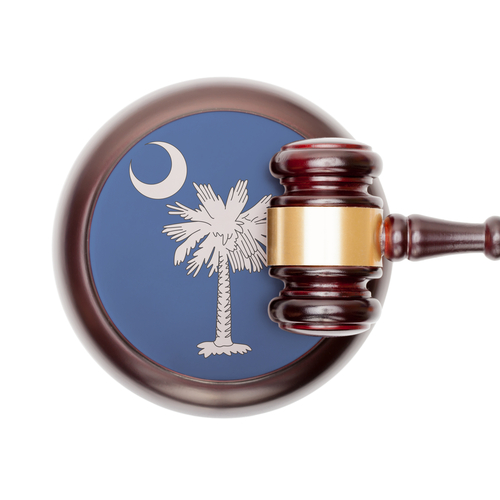Vidal to Consider Revisions to Iancu’s Eligibility Guidance
“The current guidance ‘has gone a long way toward providing consistent decision-making across our over 9,600 patent professionals, and has also produced a remarkable drop in the corps-wide eligibility rejection rate from about 25% in 2018 to about 8% today…[but] there is more work to be done,’” Vidal wrote.
In a Director’s Forum blog post published earlier today, United States Patent and Trademark Office (USPTO) Director Kathi Vidal recounted the Office’s efforts over the last several years to make U.S. patent eligibility standards clearer for applicants and said that the agency will be revisiting the 2019 subject matter eligibility guidance issued by the previous administration in an effort to bring further clarity to the examination process.
Backdrop
Vidal began with a reference to the recent patent eligibility report published by the USPTO in June in response to a March 2021 request from Senators Thom Tillis (R-NC), Mazie Hirono (D-HI), Tom Cotton (R-AR) and Chris Coons (D-DE). As part of that report, which was based on 140 comments received, commenters said that, while the 2019 guidance on patent eligibility issued by former USPTO Director Andrei Iancu has been helpful, it has not resulted in the necessary predictability or consistency because a) it is not binding on the courts and b) USPTO examiners do not always apply it consistently. The latter issue has made prosecution very art unit dependent, said some commenters, while others claimed that “there is… evidence that the revised guidance is leading to the allowance of patent claims that are ineligible under Alice.”
Vidal’s blog post also comes on the heels of a study published by the Government Accountability Office (GAO) last week in which 30% of the Patent Trial and Appeal Board (PTAB) judges surveyed said that they felt “director-created policy and guidance had an effect on their ability to decide cases independently.” As an example, some judges interviewed thought Iancu’s guidance on subject matter eligibility “was inconsistent with relevant case law” and that it “creates new tests for evaluating whether an invention is eligible that are not supported or established by the applicable case law.” Thirty-one percent of respondents said it did not create new tests and 39% had no opinion.
Successes of the Current Eligibility Guidance
However, the post pointed to improvements in consistency of examination following the eligibility guidance, as well as the October 2019 Patent Eligibility Guidance Update, and the Berkheimer Memo, now integrated into the Manual of Patent Examining Procedure (MPEP). The current guidance “has gone a long way toward providing consistent decision-making across our over 9,600 patent professionals, and has also produced a remarkable drop in the corps-wide eligibility rejection rate from about 25% in 2018 to about 8% today,” Vidal wrote.
A subsequent report on patent examination outcomes titled “Adjusting to Alice” explained that the 2019 revisions to the eligibility guidance “resulted in a 25% decrease in the likelihood of Alice-affected technologies receiving a first office action with a rejection for patent ineligible subject matter” and “uncertainty about determinations of patent subject matter eligibility for the relevant technologies decreased by a remarkable 44% as compared to the previous year.”
The Office additionally implemented the Deferred Subject Matter Eligibility Response (DSMER) pilot program at the urging of Tillis and Cotton March 2021. Pilot participants are “permitted to defer responding to [subject matter eligibility] SME rejections until the earlier of final disposition of the application, or the withdrawal or obviation of all other outstanding rejections.” Applicants with qualifying applications—including a requirement that the first Office action on the merits makes both SME and non-SME rejections—receive invitations to participate in the pilot. Vidal noted in today’s post that the invitation period of the program is set to expire on July 30, 2022, while “the program itself will continue for approximately one to two years as each of the participating applications reaches final disposition.” The Office has sent approximately 600 invitations to date, and one-third of those who responded have accepted.
More to Do
But despite these various efforts, “there is more work to be done,” Vidal explained.
Consequently, the Office is asking for the public to send comments on the current eligibility guidance to 101@uspto.gov by September 15, 2022. “The more specific the comments, the easier it will be for our team to assess them,” said the post.
Vidal indicated during her Senate confirmation process that she might update the eligibility guidance. During her confirmation hearing in December 2021 she said that Section 101 is “an area that’s always deserving of attention because the law is not set; every single Federal Circuit judge has said it’s very difficult to understand the contours of the law, so that is something I would certainly always revisit to make sure that any guidelines are consistent with the law—they are right now—and that they’re promoting innovation.”
Image Source: Deposit Photos
Author: miflippo
Image ID: 28667711
Eileen McDermott
Eileen McDermott is the Editor-in-Chief of IPWatchdog.com. Eileen is a veteran IP and legal journalist, and no stranger to the intellectual property world, having held editorial and managerial positions at […see more]







